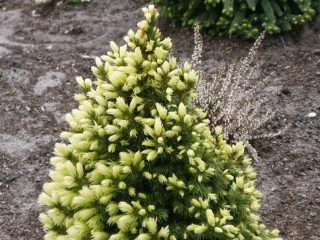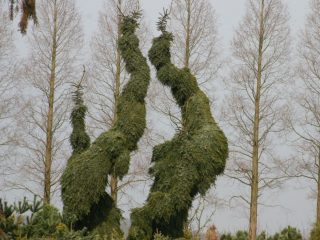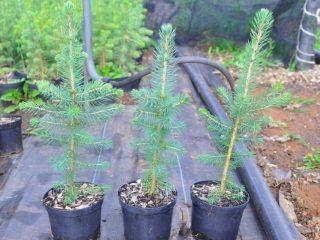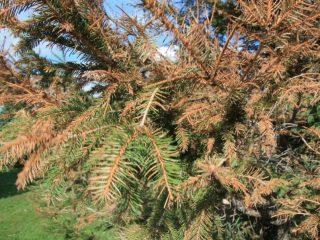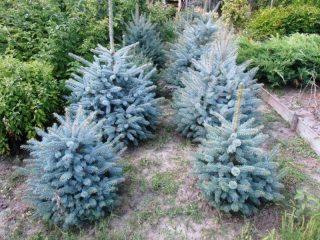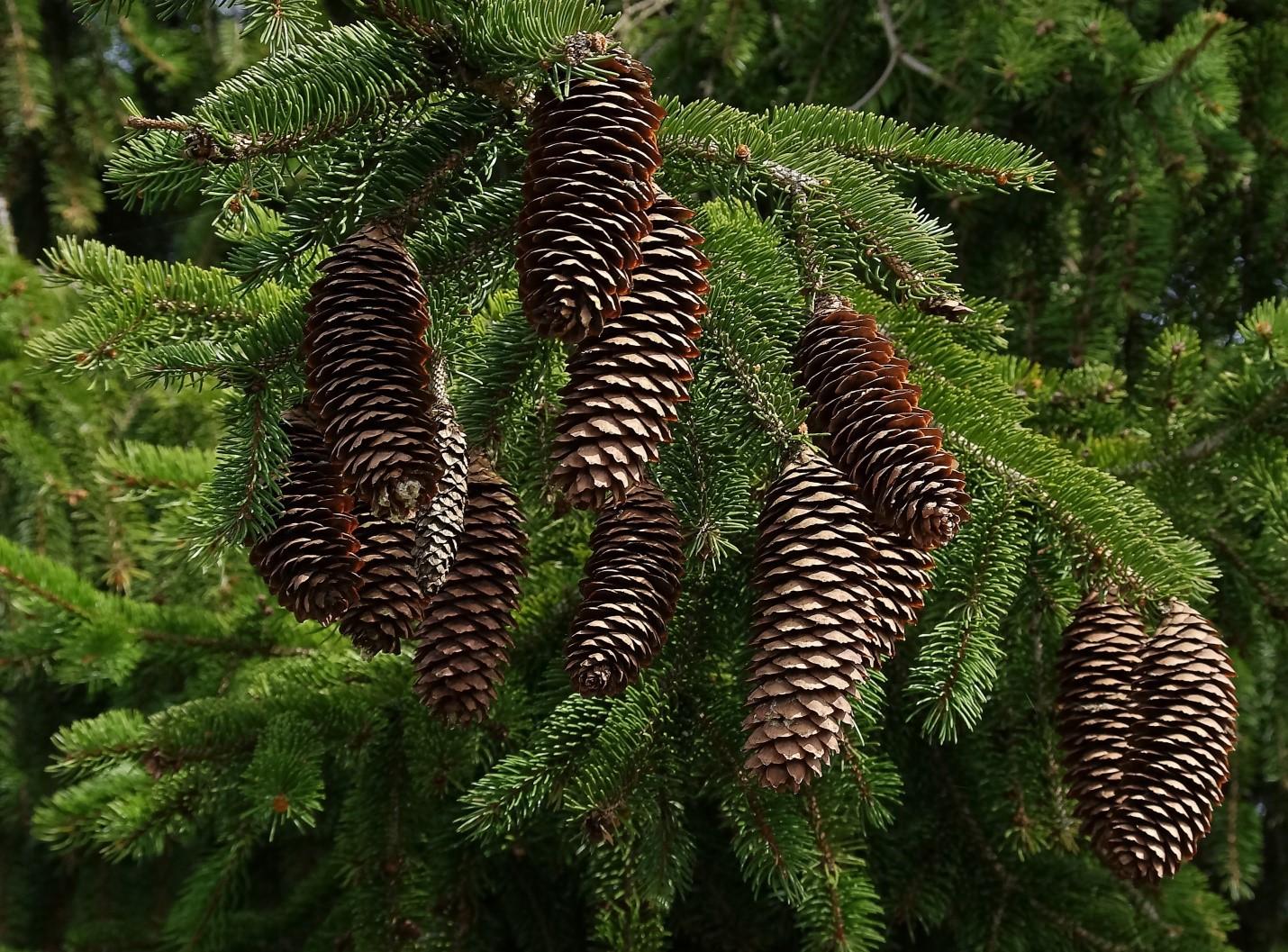Content
Belobok spruce is a crop of unusual colors that immediately catches the eye. The white needles growing at the ends of the branches look interesting against the green background. However, the plant is distinguished from other conifers not only by its appearance, but also by a number of other features.
History of origin
Belobok appeared at the beginning of the last century - as a result of breeding work by the Polish botanist Jan Bialobok. Spruce inherited the author's name, and then became widespread and loved by gardeners.
Description of the common spruce Belobok
The modified leaves of the conifer have a greenish-gray tint. Young foliage is always light, so spring growth is characterized by a white-golden color. It persists for a month, after which the “baton” is passed on to the next generation of leaves.
The needles of the Bialobok variety reach no more than 4 cm in length. There are a lot of them, thanks to which the plant retains its decorative appearance in any season. The crown can be asymmetrical, and with age it restores itself - this is typical of all spruce trees.

Adult plants of the Bialobok variety have a cone-shaped structure, which is often emphasized by pruning
Sexual dimorphism of fruits is weakly expressed, however, both male and female cones can be present on the same tree. Their average length is 10 cm. The fruits appear annually, initially have a brown color, then green.
Dimensions and height of Belobok spruce
The ornamental plant is not large in size, its height barely exceeds 4 m. In favorable conditions, the figure can increase - up to 5.5 m. The diameter of the crown is 3 m.
How fast does Belobok spruce grow?
Metabolic processes proceed slowly, therefore the growth of the Bialobok variety is appropriate. Over the course of a year, the conifer increases in size by 10-15 cm. Botanists have recognized this tree as a dwarf tree.
Advantages and disadvantages
The prickly spruce Bialobok is an ornamental crop, and many photos confirm this.
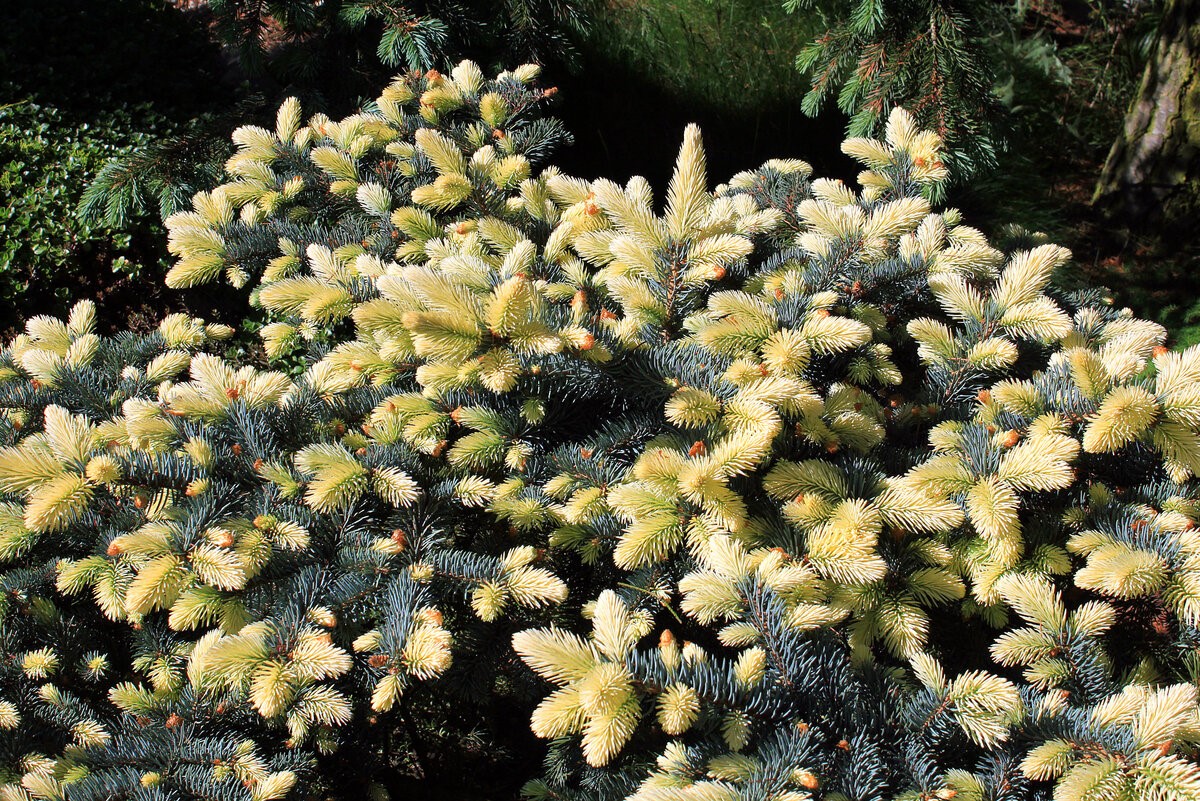
The plant is compact and has an interesting appearance.
Pros:
- undemanding;
- possibility of growing in different regions;
- resistance to cold;
- annual formation of cones.
Minuses:
- the need for regular inspection for pests due to the low location of the branches.
Planting Belobok spruce
The area in which the Bialobok spruce will grow is of great importance. It is recommended to grow the crop in open places where its contrast will be noticeable. The soil for the plant should be drained, fertile and moderately moist - stagnation negatively affects the root system.
The hole is dug based on the hardness of the soil. So, on loams the recommended depth is 75 cm, in clay substrates - no more than 40 cm.The size of the pit also depends on the size of the seedling.

When planting in groups, maintain a distance of 300 cm between neighboring plants.
If the soil is depleted, use mineral fertilizer for conifers. Bialobok spruce can be grown directly in the ground or a seedling can be prepared at home by planting it in a spacious container. After planting, the tree is watered and covered with a layer of mulch.
Caring for Belobok spruce
Belobok spruce is most often cultivated on a trunk; there are many photos of what the plant looks like when grown this way. It is not difficult to achieve a similar result with your own conifer if you devote some time to care.
Young plantings require constant moisture. Once a week, the roots should receive at least four buckets of liquid. In summer, the volume is increased, since drying out of the soil is not allowed under any circumstances.
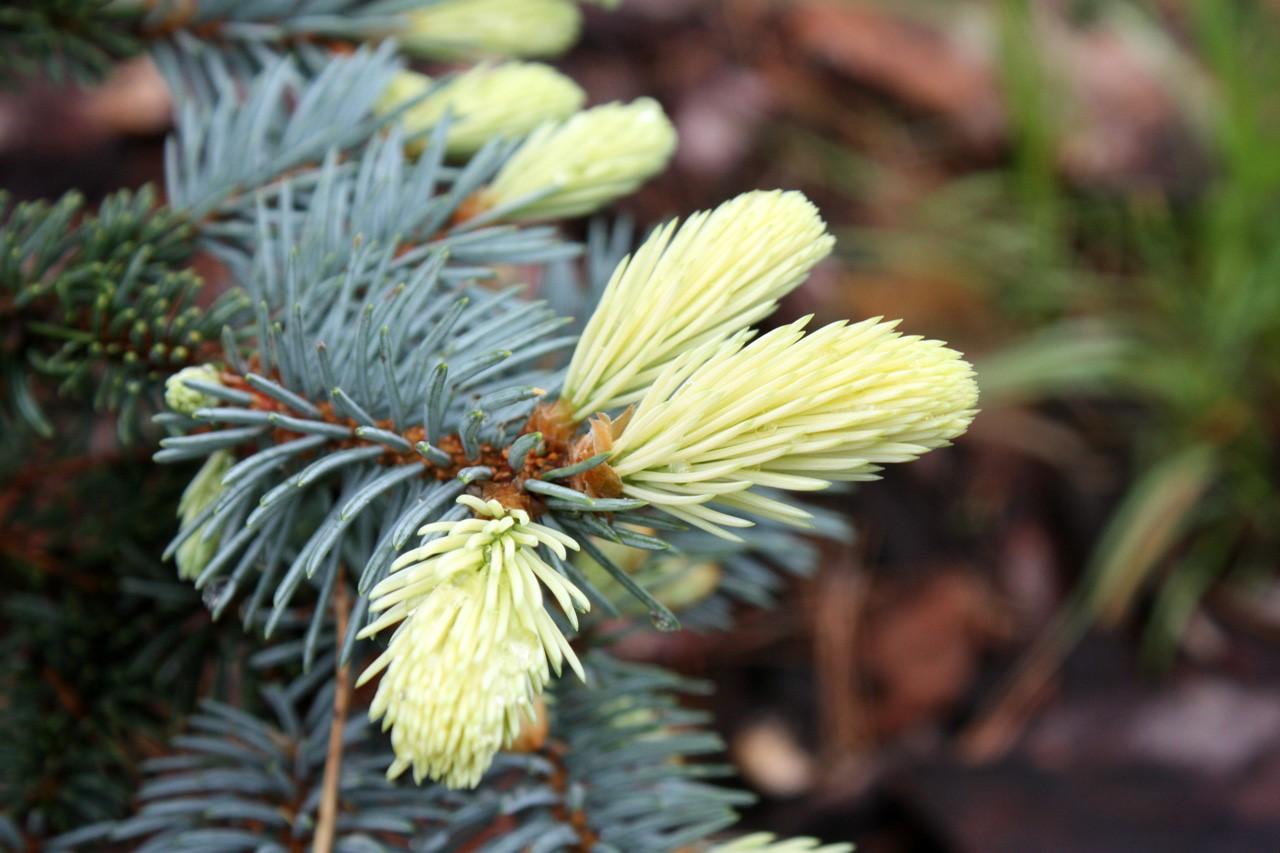
Mature trees need more moisture
After watering, it is recommended to loosen the soil to avoid the appearance of clods and irregularities that impede air exchange. To protect Belobok from insects and fungal spores that live on the ground, the crown is sprayed with Epin once a season.
In the spring, the conifers are fed with peat diluted with garden soil. In autumn, it is enough to scatter a little peat in the root zone. There is no need to tie up the branches; they are strong and can withstand snow on their own. A young Bialobok spruce is covered with burlap, while an adult spruce is mulched with spruce branches.
Reproduction methods
Prickly spruce (picea pungens bialobok) Bialobok is propagated using cuttings and seeds. Cuttings are the most common method.Select strong shoots, preferably older than 10 years, covered with wood, cut and placed in a ready-made soil mixture consisting of peat, dry leaves and turf.
The seeds are obtained from cones. Only ripe autumn fruits are collected. They are dried, after which they open on their own. The seeds are soaked in water with potassium permanganate, placed on sand and sent to the refrigerator, in which the material will undergo the necessary stratification.
The grafting method is much less commonly used. It is available only to professionals who grow Belobok spruce in nurseries, or to people well versed in botany.
Diseases and pests
The Belobok variety is suitable for cultivation in different areas, due to its strong immunity. Spruce Bialobok is not the only conifer resistant to infections. However, the tree is not 100% protected. Fungi pose a great danger, especially for young trees.
Rust, schutte, fusarium are the main opponents of this variety of spruce. If you neglect seasonal treatment, there is a chance that the plant will get sick, and at the same time its decorative effect will be impaired.
A common cause of infection of the Bialobok spruce variety is waterlogging. It is caused by prolonged rains and the gardener’s lack of desire to cover the plantings.

The first thing to do in case of damage is to stop moistening, spray the soil with a fungicide and build a canopy.
Belobok spruce also has insect pests. These include aphids, hermes and bark beetles. At the first appearance, use a soap solution: spray once every three days until the number of parasites decreases.If folk remedies do not help, use Fufanon.
Photo of Belobok spruce in landscape design

Typically, Bialobok is grown along fences so that others can also enjoy the beauty of the tree.

In some countries, the plant is key in landscaping park areas

The Belobok conifer looks best against the background of a facade of a similar tone
Conclusion
Belobok spruce is an interesting variety of thorny conifers, which has become widespread in many countries, including Russia. The planting process is as simple as maintenance. Therefore, the variety is recommended for beginners.
Reviews of Belobok spruce
